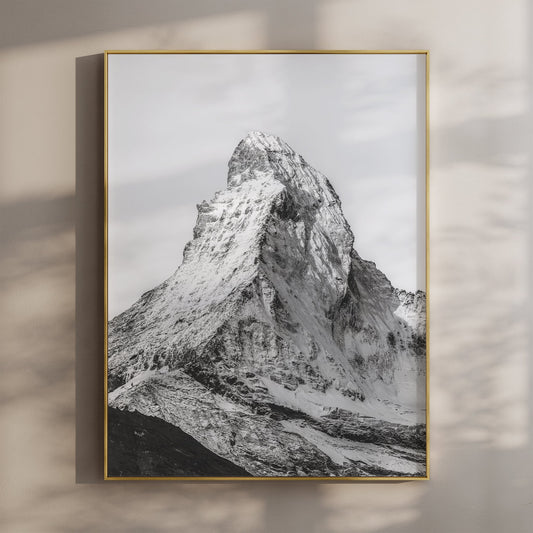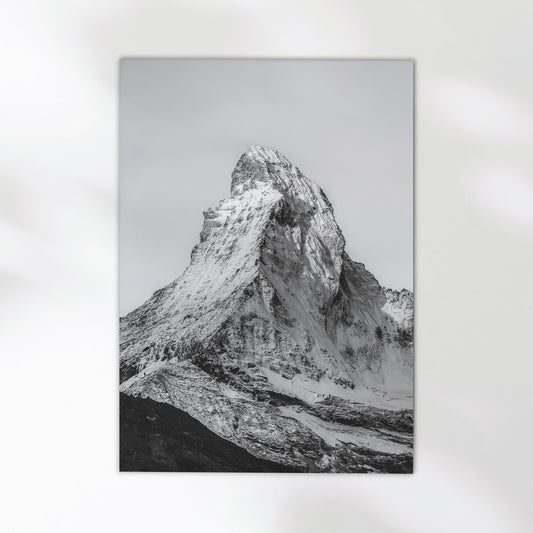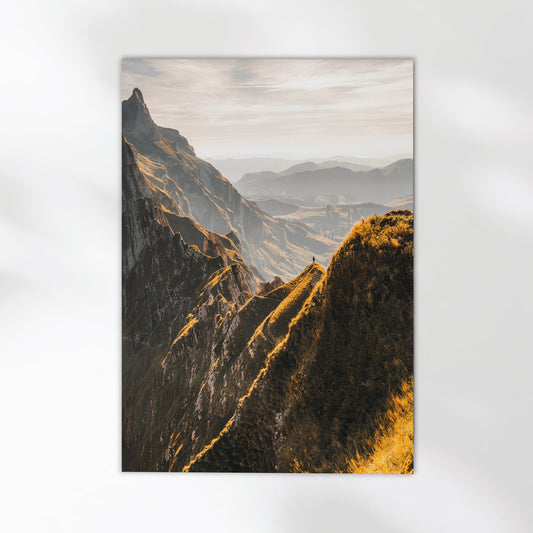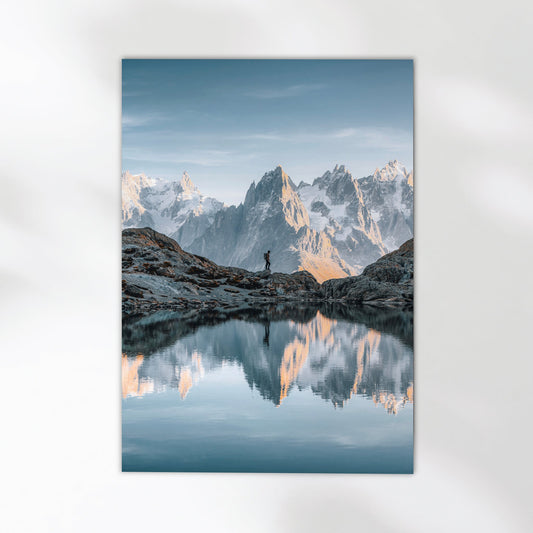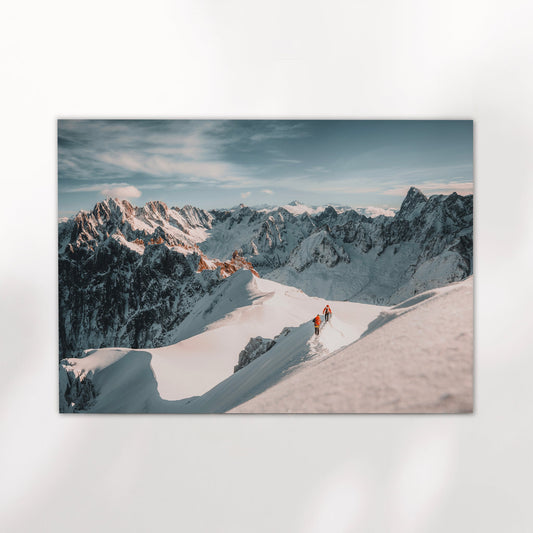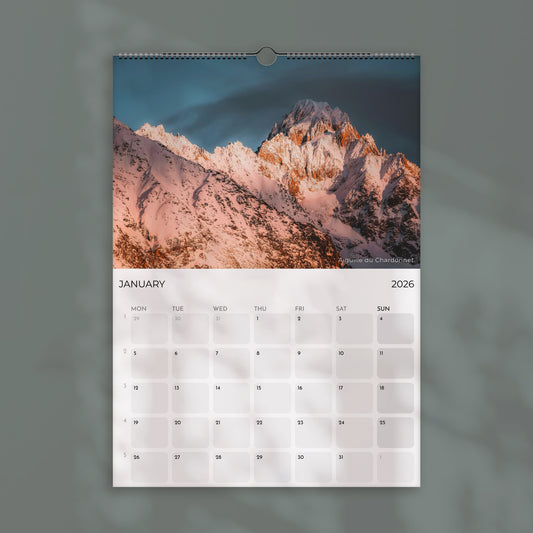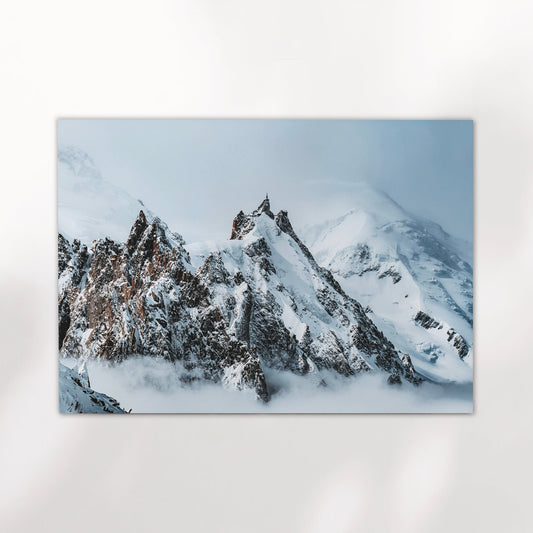Avalanche Awareness: Part 7: Best Practices for Avalanche Safety
Share
This is the final part of our 7-part course on avalanche safety, and by now, you’ve built a solid foundation. In the first section, we introduced the types of avalanches, their causes, and the risks they pose. The second section covered essential avalanche equipment and the importance of mastering its use. Next, we explored how to recognise avalanche-prone terrain in section three, followed by field observations and snowpack testing in section four. Section five discussed the critical role of weather in shaping avalanche conditions, and section six explained how to interpret avalanche bulletins and danger ratings.
Missed Part 6? Click here
Now, we bring everything together with best practices for traveling safely in avalanche terrain. Avalanche safety isn’t just about carrying the right gear—it’s about making smart decisions at every stage of your trip. Best practices involve thoughtful planning, clear communication, safe travel techniques, and the ability to adapt when conditions change.
In this final section, we’ll dive into the habits and strategies that will help you minimise risk, protect your group, and confidently navigate the backcountry. Let’s ensure you’re prepared to make informed, safety-first decisions every time you venture into avalanche terrain.
As you explore the beauty of the Chamonix Valley, why not bring a piece of the Alps home with you? Our Chamonix-themed print store offers a curated selection of stunning art prints inspired by the region’s awe-inspiring landscapes. From dramatic mountain landscapes to peaceful alpine valleys, our prints make the perfect souvenir or gift for any mountain lover.
Follow us on Instagram at @chamonixprints for daily inspiration, behind-the-scenes glimpses of the Alps, and exclusive offers. Share your adventure photos with us by tagging #ChamonixPrints—we’d love to see your adventures in Chamonix!

1. Travel Techniques: Minimise Exposure to Risk
Your movements in avalanche terrain should be deliberate and calculated, with the goal of minimising exposure to potential hazards.
Expose One Person at a Time
- Why It Matters: If an avalanche occurs, limiting exposure ensures only one person is caught, making rescue easier for the rest of the group.
- How to Implement It:
- Cross suspect slopes one at a time, with the rest of the group watching from a safe zone.
- Stop in designated safe areas before regrouping.
Choose Safe Zones for Stopping
- Why It Matters: Pausing in unsafe areas, such as the middle of a slope or near terrain traps, increases the group’s vulnerability.
- How to Implement It:
- Stop on ridges, dense forests, or low-angle slopes (less than 30°).
- Avoid stopping in gullies, below cornices, or on open slopes.
Maintain a Clear Line of Sight
- Why It Matters: Group members should always be able to see each other for quick communication and monitoring. Losing sight of someone can delay response in an emergency.
- How to Implement It:
- Use pre-determined landmarks for regrouping.
- Avoid situations where terrain features (e.g., ridges or trees) block visibility.

Plan Your Route Wisely
- Why It Matters: Poor route choices can lead your group into dangerous terrain or expose them to unnecessary risk.
- How to Implement It:
- Plan your route to minimise time spent in avalanche-prone areas.
- Use maps and terrain tools to identify low-risk options.
- Stick to your planned route unless conditions force you to adapt.
Pro Tip: When descending, choose routes with clean runouts (areas where an avalanche is less likely to deposit snow deeply).
2. Group Communication: The Key to Team Safety
Good communication is essential for avoiding confusion, coordinating decisions, and responding quickly to changing conditions.
Discuss the Plan Before You Start
- Why It Matters: Every group member needs to understand the route, the risks, and what to do in an emergency.
- How to Implement It:
- Hold a pre-trip meeting to review your plan, including alternate routes and safe zones.
- Assign roles, such as a leader to set the pace and a navigator to track the route.
Use Clear, Concise Communication
- Why It Matters: In high-stress situations, clear communication prevents misunderstandings that can lead to dangerous decisions.
- How to Implement It:
- Use specific, direct language when giving instructions (e.g., “Stop here and wait” instead of “Hold on”).
- Agree on hand signals for situations where shouting isn’t practical.

Check In Regularly
- Why It Matters: Conditions change quickly in the backcountry, and group members may experience fatigue or stress that compromises safety.
- How to Implement It:
- Pause at safe zones to check how everyone is feeling physically and emotionally.
- Encourage open discussion about concerns or doubts regarding conditions.
3. Adaptability: Flexibility Saves Lives
The mountains are unpredictable, and conditions often differ from forecasts. Being willing to change your plan—even if it means turning back—is a hallmark of responsible backcountry travel.
Know When to Turn Back
- Why It Matters: Pushing ahead in deteriorating conditions increases your risk unnecessarily.
- How to Implement It:
- Establish pre-determined “no-go” criteria, such as visible red flags, worsening weather, or group fatigue.
- Treat turning back as a smart decision, not a failure. The mountain will still be there tomorrow.
Monitor Conditions Continuously
- Why It Matters: Snow stability can change over the course of the day, especially with rising temperatures or wind.
- How to Implement It:
- Watch for signs of instability, like “whumpfing” sounds or cracks in the snow.
- If conditions worsen, retreat to safer terrain immediately.
Be Prepared to Adjust Your Route
- Why It Matters: Even the best-planned routes may become unsafe due to new snow, wind slabs, or other factors.
- How to Implement It:
- Identify alternate routes before starting your trip, and be ready to use them.
- Use terrain features like ridges or dense trees to navigate away from avalanche-prone areas.
4. Additional Best Practices
Carry and Know How to Use Your Gear
- Ensure every group member has avalanche safety gear (transceiver, probe, shovel) and knows how to use it. Regular practice is essential.
Travel in Small Groups
- Why It Matters: Smaller groups are easier to manage and minimise exposure to avalanche terrain. Avoid traveling in groups larger than 6–8 people.
Respect Avalanche Warnings
- Check the avalanche bulletin before your trip and follow its recommendations. A “Moderate” danger rating (Level 2) doesn’t mean no risk—most avalanche accidents occur at Moderate or Considerable (Level 3) danger.

Stay Updated on the Weather
- Weather can change quickly in the mountains. Keep an eye on the sky, and adapt your plans accordingly.
Practical Example: Putting It All Together
You’re backcountry skiing with three friends in Chamonix. The avalanche forecast is “Considerable,” with specific warnings about wind slabs on north-facing slopes.
- Travel Techniques: You stick to a ridgeline for most of the ascent, minimising time spent on steep, open slopes. When crossing a suspect slope, only one person travels at a time while the rest watch from a safe zone.
- Group Communication: At the top, you review the planned descent and discuss where to regroup on the way down. Everyone confirms they’re feeling good and ready to proceed.
- Adaptability: Midway through the descent, you hear a “whumpf” sound and see cracks spreading near your ski track. Recognising the danger, the group changes the route to avoid steeper terrain.
Result: By following best practices, the group avoids potential avalanche hazards and completes the tour safely.
Key Takeaway
Avalanche safety is about minimising risk at every step. By traveling carefully, communicating clearly, and remaining adaptable, you can significantly reduce the chances of being caught in an avalanche. Remember: the best decisions are the ones that prioritise safety over summits.
Final Thoughts: Educate, Prepare, and Stay Safe
The mountains are awe-inspiring, but they are also unpredictable. Avalanches are not random—they follow specific patterns influenced by weather, terrain, and snowpack. By educating yourself about these factors, you gain the ability to anticipate risks and make safer decisions.
Preparation is more than just packing the right gear; it’s a mindset. It’s taking the time to check the avalanche forecast, learning how to use your safety equipment, and understanding that sometimes, the wisest choice is to turn back. The mountain will always be there, but your safety—and the safety of your group—must come first.

The mountains demand respect, and part of that respect is humility. Even experienced adventurers can make mistakes or find themselves in challenging situations. That’s why ongoing learning, practicing rescue skills, and being adaptable in the face of changing conditions are so important.
Remember, every decision you make in the backcountry matters—not just for you, but for everyone you’re traveling with. Adventure responsibly, stay vigilant, and always prioritise safety over goals. When you take the time to educate yourself, prepare thoroughly, and respect the mountain environment, you honour the beauty and power of these wild places.
The best way to enjoy the backcountry is to ensure you—and everyone in your group—return home safely, ready for more adventures to come.

